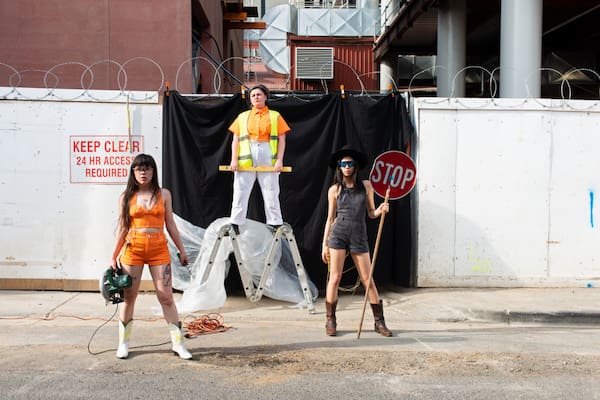Cultural appropriation is perhaps the most overused and misunderstood concept of contemporary social politics. Despite its proliferation in almost every aspect of cultural dialogue, the cultural appropriation discussion often neglects issues of class, particularly the way that class manifests in the appropriation of fashion and dress.
The practice of the upper classes taking the fashion and uniform of the working classes and re-establishing them as high fashion, often described as “class appropriation”, is nothing new. Dr Martens, now found on the feet of everyone from university students to Bella Hadid, were once worker’s boots. In the 70 years since their creation, their signification – the meaning we ascribe to their wearer or the act of wearing them – has been transformed and re-transformed as they’ve been worn by different social groups and subcultures. They’ve been adopted by both the right and left side of politics, the wearing of them indicating their owner’s beliefs in anything from facism to anti-facism and anything in between. Their significance as footwear for factory workers and postmen has long past.
Dr Martens are no longer a current convincing example of class appropriation, because time has attributed their social meaning significant fluidity. Blundstone, their Australian near-equivalent, are a more interesting contemporary example.
Once the mainstay of construction sites Australia-wide, Blundstones are now equally as common on the footpaths of Crown or King street. A middle class alternative to RM Williams, Blundstones are the cooler counterpart due to their perceived authenticity, their immediate connection to worker culture, and the fact that they aren’t the preferred footwear of the Liberal party.
Blundstones are representative of the uneasy line that class appropriation straddles: the wearer wants to be perceived as authentic, without seeming so authentic that they are mistaken for a member of the class that their clothes are referencing. They’re an immediate reference to a moment of Australian working class culture that is now (again) in vogue: of mullets, pub rock and bad tap lager. Blundstones allow their middle class wearers to engage in cultural tourism: the aesthetics and culture of the working classes, without actually having to wear them to work.
A new entrant to the Australian workwear market takes this behaviour further- SUK, an “ethical” brand that sells working clothes at a Gorman price point, founded in 2018.
Mimosa Schmidt, the brand’s founder, is a former labourer, lending the company an air of authenticity that would otherwise be lacking. With a supposed member of the working class at the helm, SUK is able to use identity politics as a shield.
In fact, much of SUK’s image is shrouded in the kind of hollow social justice politics currently popular amongst liberal creative types. It advertises size inclusivity, despite admitting that its products run 1-2 sizes smaller than average. It’s “built on the ethos of celebrating all workers as worthy” despite the fact that few workers could afford even its lowest priced garments.
SUK brands itself as ethical workwear, but its target market isn’t actual workers. People working the jobs that SUK purports to make clothes for- waitresses, labourers, and factory workers- are unlikely to afford such frivolities as a fashionable “workers bib” for $80. Most of the garments sold by SUK are available in some form from other manufacturers, such as King Gee, for half the price. Aware of this contradiction, the brand is careful to use working imagery in its advertising. A video advertisement published across social media shows models working in various settings, and though some are working in their actual work environments, most are popular Melbourne instagram creatives playing dress-up.
This is what makes SUK such a compelling case study for class appropriation. In play-acting at being working class, the branding of SUK is mirroring the daily behaviours of its true target audience: hip middle class professionals and creatives, blithely unaware of the reality of life for people who wear such clothes for work, not fashion. It’s not necessarily “problematic” to wear a $180 boiler suit, but it is interesting to interrogate the meaning of wearing such an item for leisure, especially when the wearer doesn’t engage in the kind of work that requires it. In practical terms, such a meaning is decidedly sinister: as the clothes become more fashionable, those that wear them for work are priced out.
As unsafe working environments lead to injury and death, as our media class advocate for a reduction in hospitality wages, and as our government attempts to introduce new union-busting laws, yuppies continue to play at being poor.





